The characters at the gardens are no less diverse than those of people. So what is the difference between the Italian garden from English, and the Japanese garden from the Chinese?
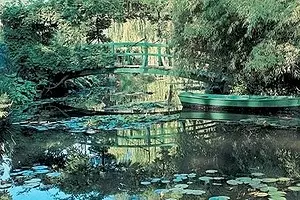
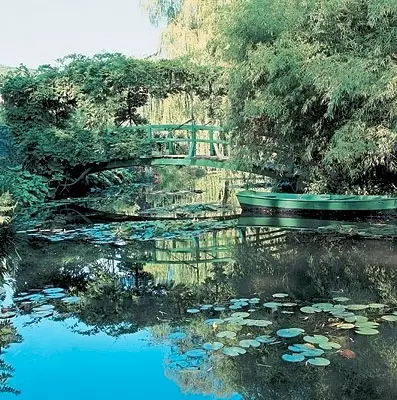
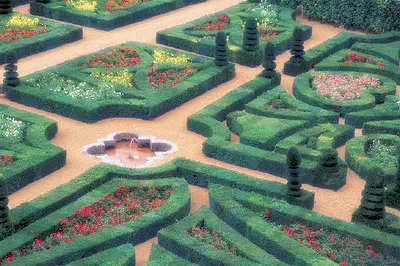
Bosteks - independent zones in a regular park, framed by the hedge of shrubs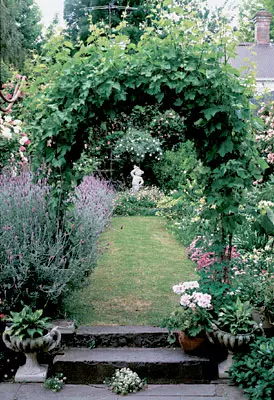
This surprisingly plastic landscape is difficult to attribute to any particular style. It may be part of the English romantic estate, and the element of the restrained modern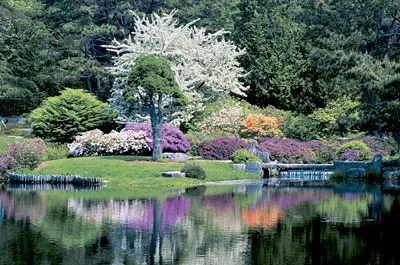
When creating a landscape garden, compositions with reflective plants are used. Bright paints indicate the eastern "origin" of this landscape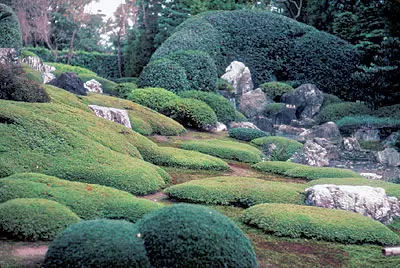
Stripped "pillows" from decorative shrubs and soil plants on a stone slope - one of the possible elements of the Chinese garden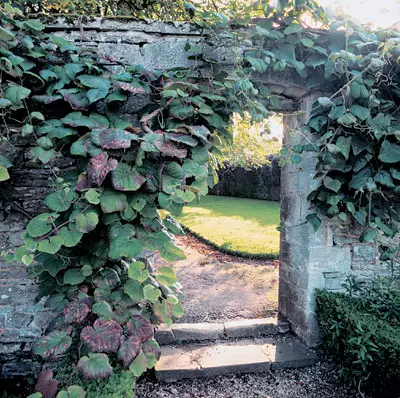
Arch, seized by grapes of Kuan, open the walkway into the secret garden of the Italian Villa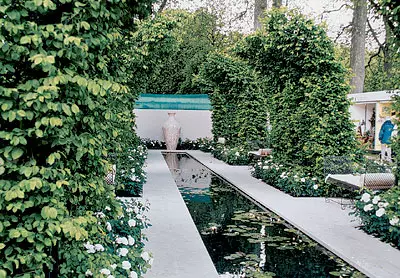
Strict rectangular revenue - only one of the elements of the Italian manual landscape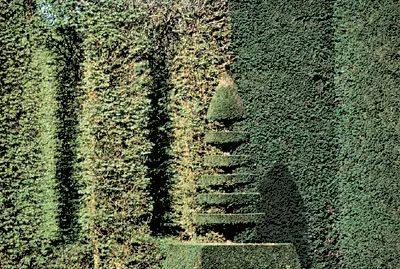
To create original cutting forms, it is recommended to use barbaris, thuy western, some types of pine and fir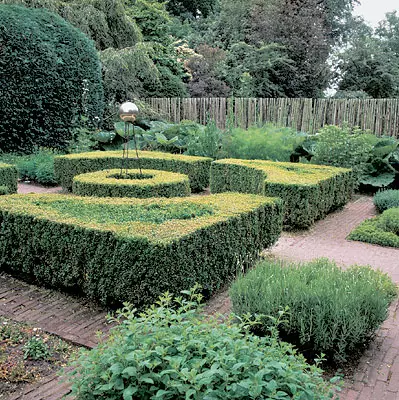
Strict geometry of the French regular park opposition
ease of natural landscape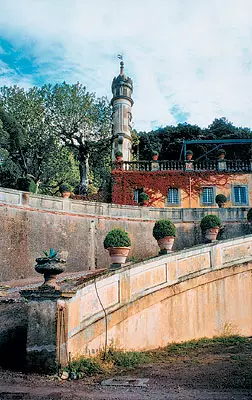
Italian villa. Characteristic element of terraced gardens - portable pots with flowers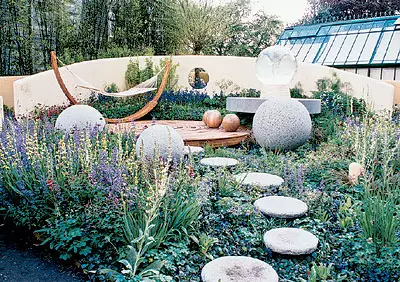
Modern style architect often uses low-function
Elements. In the case, round stone balls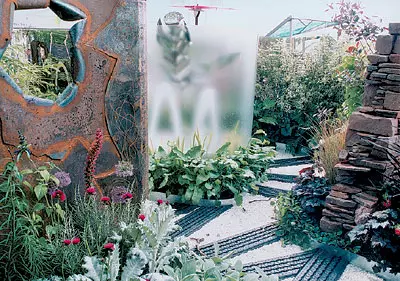
Exhibition in Chelsea. Modern version of the modern garden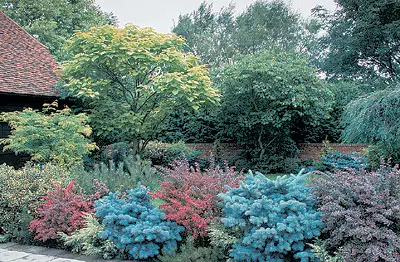
German garden is a connection of several styles at once: bright Eastern multiwell and English way to form a landscape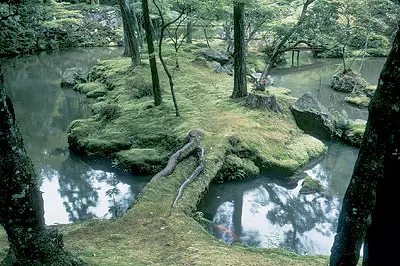
In Japan, there has been a tradition of creating monosads from MCH. It is believed that only the mute moss is able to truly convey all the variety of nature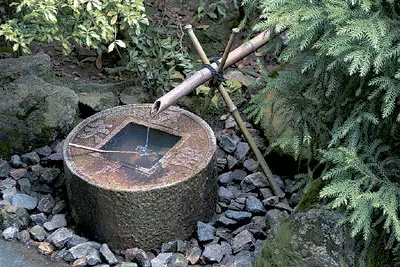
Tsukbay - Japanese bowl for the ablution of face and hands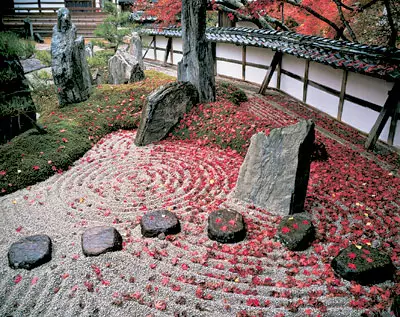
"Dry" reservoir, tracks from stones and red maple leaves create a unique image of the Japanese garden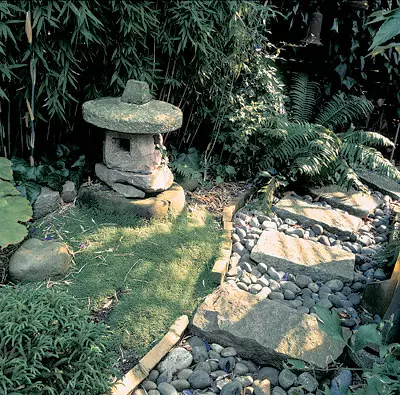
You need to go on the "dry" stream very carefully, stepping only on the stone track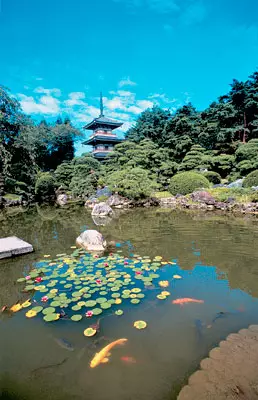
"Goldfish" in the Chinese garden is not uncommon, especially since yellow color is very readable, it has long been associated with the imperial family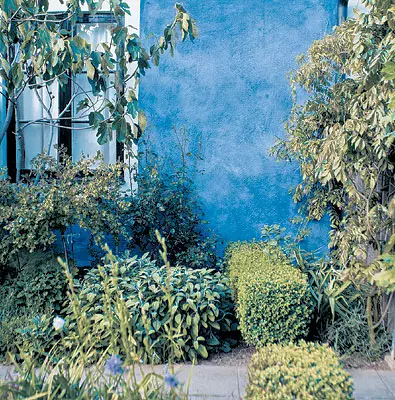
Modern eclecticia combined the intimacy of the Dutch garden and the delicate taste of the style of modern. Before the wall of the house, the cut-off Cubes of Samsit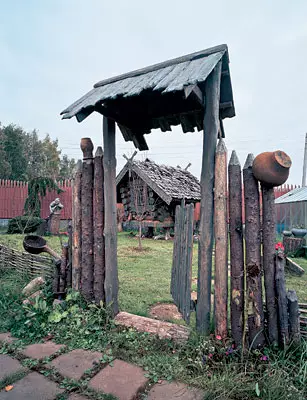
Real hut on curiped legs, the statue of women of Yaga and a wooden hedge make this corner of a garden look like an illustration to a Russian fairy tale
The garden is the semblance of the Universe, the book by which you can"Read" the Universe ... The book is special: it reflects the world
In his good and perfect essence.
D. S. Likchev
Garden architecture, like any art, is a way to express a person's globility. Therefore, the characters at the gardens are no less diverse than people. Each garden is a certain historical and cultural era. It reflects the temperament and life of its nation and is influenced by the personal handwriting of the landscape architect.
Unforgettable story
The first of the preserved mention of organized landscapes belong to the VI-II centuries. BC e. WTO Time in the territory of Ancient Egypt, Assyria and Babylonia Gardening has already been formed as a separate area of activity. A little later, the so-called "paradise" appeared in Persia for royal hunting, public gardens in ancient Greece became popular with gymnasiums, and small peristrylies arose in the courtyards of the ancient Roman houses. The harsh era of the Middle Ages contributed to a very closed life of people, the gardens "hid" behind the monastery walls and began to perform, mostly utilitarian function. It was then that the distribution of "kitchen" and pharmaceutical gardens with hospitals and villages, gardens of medicinal herbs were obtained. A daily understanding of the garden is a totality of plants, tracks, water bodies, buildings, small architectural forms organized on a certain territory.Surprisingly, each era of the gardens played their special role: they were organized by the average centuries for prayers and pious conversations, in the Renaissance Epoch, for assembly of scientists and artists, vestments, they were musiced in gardens, danced and played games. Romantic period park was remembered as a place for melancholic walks and intimate dates. For many centuries, the creation of parks was the privilege of noble and very rich people. Gardens occupied the area in several hectares and served dozens of gardeners. Today the situation has changed a lot: many citizens own small areas of the Earth and seek to create their own "paradise". Inesl Ten years ago, Russian villas almost reminded the medieval "kitchen" gardens that provide their owners with the necessary vegetables, today there are more and more purely decorative landscapes.
Style directions
In the landscape architects, two main style directions usually allocate: landscape and regular garden. The first is created on the principle of imitation by natural landscapes, the second is opposed to them.
Regular garden - This is a garden of straight lines, a bedside form and trimmed trees. Its decisions is to receive a geometric, formal planning. Plants, tracks, reservoirs and other elements are located symmetrically relative to the main axis (axes can be several). Trees and shrubs are constantly forming and trimmed, and an partare lawn is planted in front of the palace. Vegetable crops, spicy and medicinal plants are made up in small geometrically correct beds (square, rectangular, round), forming a peculiar mosaic. The strictness and guides are opposed to chaos of natural natural landscapes. The style was determining when creating French, Mediterranean and Middle Eastern (for example, Iranian) gardens.
Landscape principle The Garden Organizations originated in ancient China, in Europe enjoyed the greatest popularity in England and France of the XVIII-XIX centuries., In the era of classicism and romanticism. Also, the landscape principle is typical for the Japanese Garden, the Garden of the Russian Modern and Country. Differs in picturesque, free planning style. The architect enjoys the beauty of the natural indirect line, seeks to reproduce the form seen in nature and make them more convex, bright and distinct. The ones of the garden there is no geometric correctness, the picturesque groups of trees are freely placed on the glades and lawns, the winding path resembles a breathtaking path in the wild forest. The reservoirs are as close as possible to natural: a small pond, descending on the stones of a waterfall or streams, running along the trees and a rippling gazebo. Together its intersection with the track is satisfied with a small bridge. In the garden of the garden, the blooming lawn seems to be launched, although a delivered gardener visits her daily with his scissors. The landscape garden can be misleading about its "culture" overgrowing corners, abandoned ponds, wetlands and "wild" rocks. Although it is difficult to forget about the presence of a person: no, no yes, and there will be a wooden bench, a bridge or a gazebo.
Such hard division on styles is very conditional, because even the "most landscape" English parks very often included a huge flower bed in front of the house, broken in regular style.
If you consider the semantics of the garden, that is, its semantic filling, a division into European and eastern landscape will be more reasonable. European parks were created solely to enjoy the beauty of the "man-made" nature, for aesthetic admissions. In the East (Japan, Korea, China, etc.), people have a completely different attitude of a person to nature, whose roots can be found in eastern religions. It was not by chance that the legend of the Pilgrim appeared, who stopped ringing his bell to accidentally not disturb the flows of plums. For a resident of East Sadd, the same book that I wrote a Likhachev, a way to transfer philosophical information about the world. Through the garden, a person learns the depth of the universe, the depth of himself, so the beauty of the landscape often stands in second place after ideological content.
Italian garden
The mountainous terrain of the Apennine Peninsula contributed to the creation of a special Italian style landscape architecture. He was still formed in ancient Rome and got widespread in XVV., In the era of the Renaissance. Italian is called a terraced garden organized by the steps on the hillside. The culmination of the landscape - erected at the top of the hill of the villa, which "paraits" over the surroundings and from which overlooks the sea or the valley. The terraced garden has relatively regular planning. The right and left part of the garden usually have only approximate symmetry relative to the main axis. The individual style of the Italian landscape creates evergreen pyramidal cypresses (of the sighted climatic conditions, they can be replaced by narrow-colonnovoid forms of Tui and juniper ordinary) and olive trees (fragrance and lok silver). Benches and stone balustrades are semi-widged with curly plants. Wild mountain rivers are drawn up as waterfalls. Italians with their living temperament in the lightest volume of water is its riot, noise, splashes and bursts.Mediterranean style is conveniently copied to hilly areas with significant height differences and open spaces. The apacol of the sea for most residents of Russia is rarity, from the windows of the "Palace" should be seen at least the endless field.
French garden
The French majestic "garden-holiday" is a classic example of a regular layout of the landscape. This principle was formed in the XVIIV., In the era of the absolutist government of monarchs, and was intended to reflect the idea of universal order: there is a main element and a whole hierarchy of subordinates. Typically, the main element, the main axis of the park was the central track passing through the entire area and ending with sculpture, fountain, reservoir or bench. Tracks located perpendicular to the central, divide the garden into small areas of geometric shapes. The tracks have clear boundaries, their edges are usually framed by low or medium-free trimmed shrubs - the Kiznik, Barbaris, Spirey, Tyu Western, can be used for this purpose. In front of the house there is a parade-flower garden-party, bright and pompous. The greatness of the French garden is easiest to evaluate from the top view, for example from the balcony.
In the French gardens of the XVII-XVIII centuries. It was fashionable to "treat" guests with various wickers: one of the bosets was equipped as an aviary with wild overtrous animals, a greenhouse was built in the other with unusual plants or cells with exotic birds were placed. Green labyrinths were also created to enjoy the public. The owner fascinated the guests an interesting conversation and turned into the depths of such a labyrinth, and then unexpectedly disappeared, leaving visitors in bewilderment. The flourishing of the French garden coincided with the proliferation of Baroque styles and Rococo. The pomp and the fancy of these areas in art were reflected in the deliberately unnatural trimmed haircut of trees, in the vintage patterns of flower beds, in elegant stone frames of pools, expressive sculpture.
The most famous of the French gardens, designed by architect Lenotrom. The famous three-beam park composition is not just an architectural reception, but also a specific symbol. Alley Rays are diverged from the Sunny Square of God Apollo, a kind of Ipostasi "King-Sun" Louisxiv. Versailles develop from east to the west, and in the morning and evening the sun is reflected in the smooth stroit of the water branch, the time visitor can see the famous "Golden Axle" of Versailles.
English garden
From the English Park there is a feeling of freedom and naturalness, ease and irregularity. But he is deceptive in his simplicity: in fact, his composition is strictly thought out, the style is very thin. Walk should calm down, create a peaceful mood is the most romantic park. Wangli landscape there is no Mediterranean space, here the entire volume is filled with vegetation. Multicolored decorative deciduous trees usually prevail over coniferous rocks, blooming shrubs are common (the Chubuschnik, which is often called jasmine, hydrangea and lilac), mixboraders (plants with leaves of various shapes and shades of barbaris, swinet, elderberry) are selected. The English flower garden does not shine with bright contrasts and is not so effective as French, - he is gentle and unobtrusive. Preference in it is given to field and forest perennials. Injection parks Architects skillfully use reflective water ability. And if a pond is present in the garden, then when planting trees, the viewing point on the opposite shore is required. Bridges above the streams and rivers have the form of the arch, which together with its reflection creates a harmonious circular figure. Characteristic element of English park - strolling sheep. They not only are kindly "trim" lawn, but also play a decorative role: movable white spots against the background of static greenery are added to the movement composition.The English park is always full of surprises. One of them is "ho-ho": park fences in the form of wide trenches hidden from eyes, which are completely unexpectedly crossed your path and make you change the route of the walk.
There is also the second direction of the English styles of manor gardens. They are organized in a strict closed space with a pond and several vegetation tiers (high trees, decorative shrubs, flowers). Regularity here is more pronounced. On cast-iron lamps and wickets, there is almost always an image of the generic coat of arms of the owners.
Modern garden
The main planning appointment in this size is the principle of similarity. The composition with one motive is played in a variety of different variations. For example, a pond with water lily breaks behind the house, and its design is used in stained glass window design. For modern architecture, the use of stained glass windows with vegetable motifs is very characteristic. Landscape, at first glance, the layout is subordinate to the centering composition: by analogy with the center of the Universe, the Sun, the house is highlighted in the park. By the way, the manor house, and its surrounding landscape is necessarily designed in a single style. It is necessary to all dominate the elegant line: it determines the border between the light and the shadow, the water surface and the shore, it sends the look and sets the trajectory of the movement in the park.
Plants in such a garden are slightly, but their placement is carefully thought out. Trees with a beautiful pattern of branches are located separately (solites) or small groups. Breeds with large and original leaves are preferred from decontaminated forms (for example, Drummondii maple, whose sheet plate has white bordering). The indispensable attributes of modern-iris style, peonies and lianas (kirkazon, honeycomb), primaries, roses, lilies and daffodils also participate in the garden decoration. For architectural elements, arbor, benches, fences and flashlights are characterized by the use of forged metal. Modern is characterized by simplicity and at the same time sophistication and expressiveness of forms, to create a park in such a style need impeccable taste.
Dutch garden
There is no such concept in official architectural science, but in general, the mention of the Dutch rural garden is found quite often. The first impression of a third-party observer is usually associated with its intimacy, cozy and abundance of colors. The land in Holland is expensive, because of which the plots of rural residents are small, just a few acres. The garden, broken behind the house, is a group of trimmed trees and shrubs plus a garden in a sunny place. Outstanding "Parter" in front of the front window houses, a sea of tulips, daffodils, hyacinths and crocuses, without which Holland is simply inconceivable. For "strengthening" of the rural style, wooden cars with flowers, ancient cast iron tap, a toy mill are used as decorations.Muslim garden
In the countries of the Arab East, in Iran, India, people from ancient times carefully treated the water as the biggest jewel. Therefore, the center of Muslim gardens often became small drip waterfalls, the complete opposite of the brown Mediterranean cascades. An equally important symbol of the garden serves the sacred tree of life: according to legends, in Egypt, it is a Sicamor Fig, in Palestine - garnet, Virana-Almond.
Muslim gardens are easily recognized on a distinct geometric plan. The so-called "Chor-tank" structure ("four gardens") is formed from several squares. Large divided into four small, which, in turn, can be crushed into even smaller. This membership is created not only by tracks and plants planted in a row, but also with the help of narrow and shallow canals with water used for garden irrigation.
Japanese garden
Eastern peoples are characteristic of particular respect for nature, its beauty, rationality and spirituality. According to the Japanese, all the "man-made" landscapes man creates in collaboration with nature: she gives the artist in the garden of his "words", he enjoys them and expresses new, human content. The composition of Japanese gardens is distinguished by restraint and laconicism, as well as the nature of their creators. Each element, whether it is a plant, water or stone, filled with a symbolic meaning. So, pine personifies longevity, bamboo, which bends, but does not break even with the most terrible bad weather, - resistance and nobility. There are centuries-old stones and mossy, according to the Sinto Religion, common in Japan before the adoption of Buddhism, they are housing of various spirits. For the Japanese, the garden is a reduced model of the world, a kind of microcosm, which, in addition to external content, is also filled with a very deep philosophical meaning. The garden is designed for calm contemplation, pondering, meditating and creating a serene mood.The island location and mountain relief of the Japanese state contributed to the definition of the main elements of national garden art. This is a stone ("skeleton" of nature, the symbol of the light male start to Yan) and water ("blood" of nature, a symbol of the dark female start yin). Water purifies, fills the streams and rivers, collapsed by waterfalls or is enclosed in a special water device Tsukbay. It is a stone bowl with a niche stronger in the upper part where water accumulates falling from the above bamboo tube. For the ablution of hands and face, for the preparation of tea, the water is buried by a special bamboo bucket. Another water device, soda, resembles aquatic swing. Drinking from the mountains of the stream filled the bamboo stem, hollow on one side. It is heavy and slowly descends, and the opposite end of the stem rises up. This happens until the water does not sharply fall out of the tube and the "swing" will not return to its original position. A periodic knock bamboo about the underlying stone contributes to scary of wild animals, which is why the device called "deer scarecrow." By the way, in European literature, instead of the name "Sots", "Shisha-Odashi" is more common.
For Japanese gardens, symbolic "dry" reservoirs from pebbles or sand are characteristic. During the arrangement of "dry" waterfalls, a contrastful pebble color is selected, which in the rays of the sunset and the dawn sun glitters like live water. When creating "dry" streams and rivers, circles are simulated on water - for this purpose, a tool resembles a rake is used. By the way, to go through the river from pebbles for the Japanese is also impossible, as for Europeans, to go along the water stroit.
No less important component of Japanese gardens, replacing the sculptural decor. They are selected in shape (statue, low vertical, flat, lying, curved), color, texture and compliance of all these qualities with the total nature of the garden. There is a whole art of the location of SUTE-ICI. Stones emphasize the bends of the coastline, emphasize the islands, form paths. The latter deliberately make "discontinuous" so that evil spirits (in accordance with the ancient synto-travelers) could not pass through the void. Flashlights and benches are made of stone.
The traditions of the Japanese garden are largely borrowed from the more ancient Chinese landscape garden. So, the surrounding landscape is actively involved in creating a garden image. Jesl from his main points is visible to the mountain range, the master will certainly turn it into a natural fence.
In Japanese gardens, there are relatively few colors, evergreen trees and shrubs (pine black, evergreen oaks, azaleas) are dominated, which symbolize the eternal constancy of Paradise. When choosing other plants, the time of their flowering and changing the color of the leaves is taken into account so that the garden is beautiful every time of year. Spring- It is time for the carefree joy and enjoyment of a blooming sakura. As you know, this is not a specific tree of wood-sakura called any bone blooming plants: plums, cherries, apricots and even apple trees. In summer, grass and rhododendrons are crushed and bloom. The beauty of fading autumn shade the red leaves of the Japanese Maple (the Maple Winter Winter Strine is a fan, striped, hynale) and gentle chrysanthemums ("Kiku" - a sorrowful flower, very beloved by the Japanese, is depicted on the imperial coat of arms). Harsh winter (gray-haired old age symbol). This pleasure is experiencing, contemplating the fancy drawing of the branches of trees and the courageous beauty of bamboo stems. Hospitality, high bamboo survive only in the southern regions of Russia, only low types of philostakhis and saz are applicable in Moscow.
Of all the species of the style of the Japanese garden, the Russians are most important to imitation of a tea garden. A tea house serves as a peculiar replacement of the arbor.
Chinese gardens
By defining the creators of the oldest landscape landscapes, Chinese gardens, they look like a picture in which flowers, trees, stones and water are harmoniously combined. If the Japanese garden is, first of all, a place for pondering and philosophizing, then the Chinese is created for entertainment. And, in contrast to the Japanese, contemplated disrupted, from the side, in Chinese people immersed in the garden space, feels it around himself and enjoys the landscape from the inside.
The Chinese garden is filled with color-bridges, roofs on the roofs and arbors are painted in bright shades of orange, red or "imperial" yellow. Another popular color-azure. The tracks are laid out by color pebbles with images of animal dragons, peacocks, octopus, fish. Wkytaysky landscape a lot of water, calm and quiet, - the fountains of the mediterranean waterfall fountains here replaces the flat, smooth smooth of the lake. The main species points are often located on the water and imply a boat trip - from the island to the island, from one bay to another. The bays and islands have their own symbolic importance, for example, the Turtle Island is associated with an ancient legend of the creation of the world. The most characteristic of the Chinese garden plants, asters, chrysanthemums, wisteria, willow, cypresses and apple trees. In the north of the country, cedar and birch are also common.
Chinese architects were fascinated by the creation of mood scenery. "Laughing" built on a skillful game of contrasts: from a dark gloomy cave you get to the Sunny Beach of the picturesque lake. The strict vertical of the pointed cypress man here is adjacent to gentle scatteries, the architect constantly uses the game shadows and light. The plants are chosen to "charm" the plants so as to create a romantic mood and hang out lightness.
Chinese architects are also fond of man-made stone maze. They rise in several "floors" and are not at all like green, fantastic labyrinths of the French.
Garden in the style of "Country"
In addition to the already mentioned Dutch rural style, you can call another three "national" Gardens "Country": Russian, Scandinavian and American.Russian "Country" Ensures a wooden hut behind a high fence. Here are planted apple trees, pears and lords brought by the owner from the forest. Sunflowers are based on a wicker hedge, and carps live in a slightly greening pond. Much attention is paid to the garden, which can be varied with a garden with medicinal plants. From decorative rocks it is necessary to choose small-bedroom (long-term Astra, Malva). Avot Favorny Many large-flowered varieties of irises, roses and clematis - residents are not from this garden. The benches are made of a raw piece of wood, non-pecked stakenik or straw mats.
In the Finnish "Country" -sad Trees of coniferous breeds prevail. There is no too bright blissful, and the main decorative elements serve suede centuries-old stones. The hut resembles the house of the Russian North. Only not worth it to steal it with a two-meter fence, it is pure Russian fiction.
American "Country" Focusing on a random passerby: Plastic sculptures that look into the street are found behind the half-meter decorative fence. The lawn is revealed to the outstanding look, but the owners have to look at their own possessions. But, it seems, American psychology is so arranged that admiring his own garden is not an end in itself ...
Modern eclectic
Most of the modern gardens created in Russia are impossible to attribute to some one style, it is always a mixture of several directions or "variations on the topic". English and Japanese gardens are very popular, although the latter is usually copied only externally and does not bear any ideological content. Available today to many opportunities to travel around the world contributes to closer communication between different cultures. The impressive of the mediterranean nature of the Mediterranean nature, the owner of the future garden wonders to create his small copy and begins to "make" the terraces from the land brought by trucks. Well, if the site is originally located on the hillside, - in the case of work is faster and cheaper. The fan of the French garden will have to be patient, because the creation of a regular alley, a parade parquet or a network of tracks with bosets is a very labor-intensive process. To maintain the shape of the cutting trees and shrubs, do not do without a skilled gardener. Monastery gardens, implemented today, will seem too strongerless space for games of children or festive fun adults. Therefore, in modern gardens, the division of the landscape on various functional and stylistic zones is more popular.
I wonder to create your own "paradise" independently or in collaboration with the landscape architect, remember one banal truth: each garden is unique and does not look like any other. The main thing is that he contain the idea, fascinated, intrigued and was close to your globalism.
The editors thanks the main landscape architect of GBS RAS Elena Voice and Landscaping Architect BRUNS Alexander Sapelin for help in the preparation of material.
